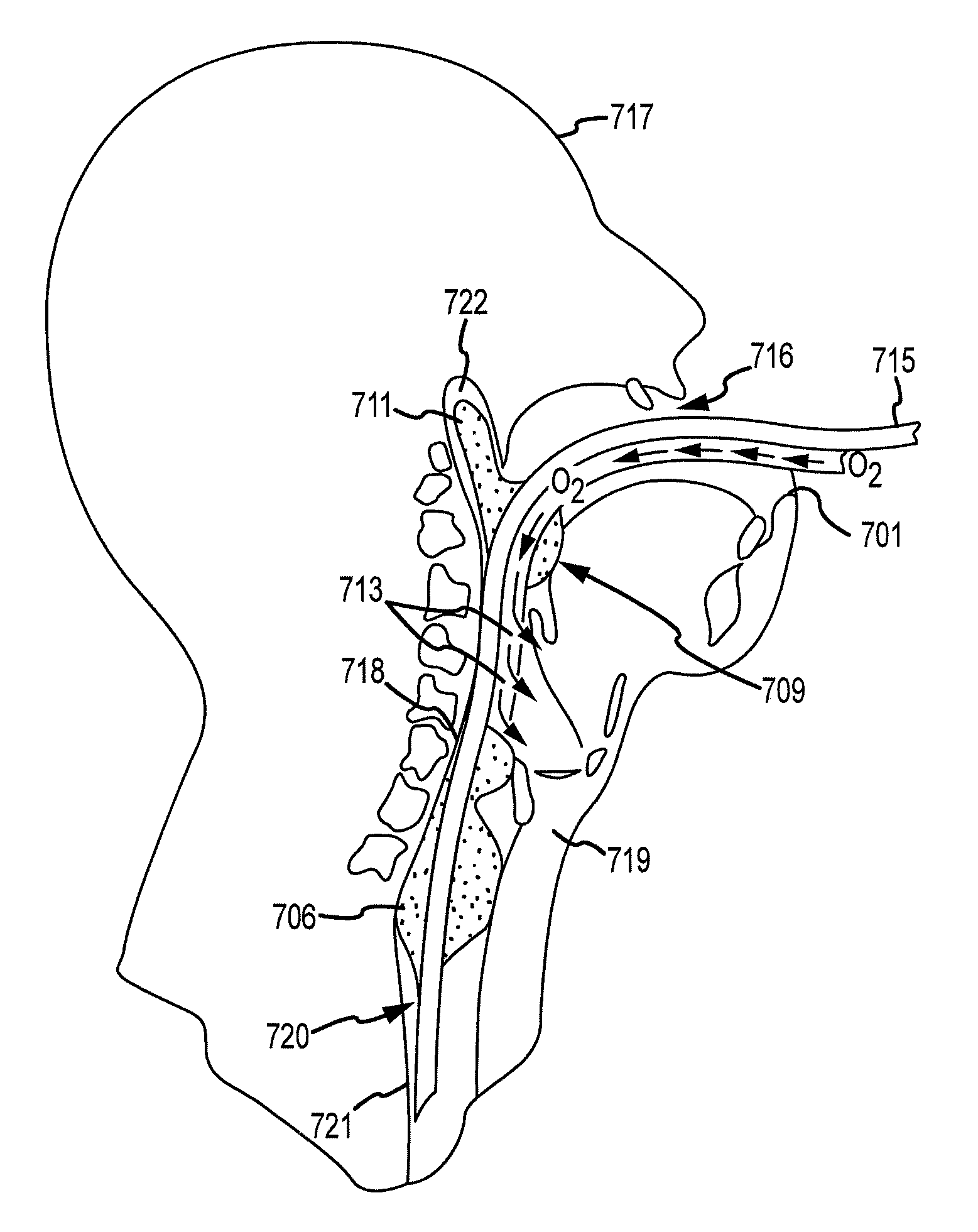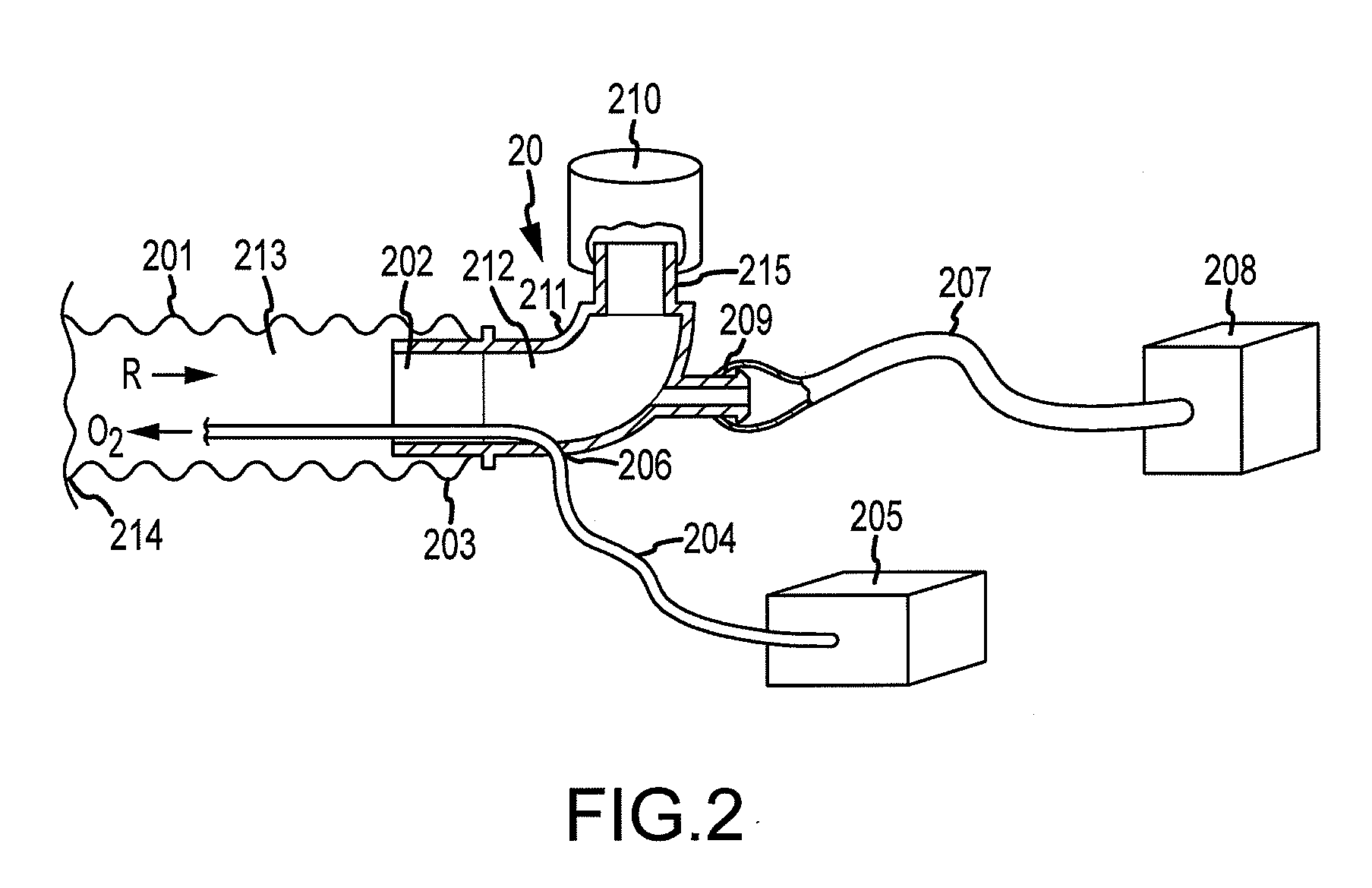System, method, and device to increase circulation during cpr without requiring positive pressure ventilation
a technology of positive pressure ventilation and system, applied in the field of cardiopulmonary resuscitation, can solve the problems of increased pressure within the thorax, inefficient approach, poor blood flow to the heart and brain with traditional closed-heart cpr, etc., and achieve the effect of increasing blood flow
- Summary
- Abstract
- Description
- Claims
- Application Information
AI Technical Summary
Benefits of technology
Problems solved by technology
Method used
Image
Examples
Embodiment Construction
[0035]In one embodiment, the invention provides a method for performing cardiopulmonary resuscitation which comprises: 1) interfacing an airway system with a patient's airway, wherein the airway system includes at least a first lumen and a second lumen; 2) repeatedly performing CPR chest compressions on the patient; and simultaneously with the CPR chest compressions 3) applying a continuous vacuum to the first lumen for a period of time ranging from 10 seconds to the end of the CPR chest compressions; and 4) injecting an effective volume of oxygen gas into the person's lungs at high velocity through the second lumen.
[0036]As used herein, including the appended claims, the “patient” means any subject undergoing cardiopulmonary respiration (CPR), and may include both human and non-human animals.
[0037]As used herein including the appended claims, the phrase “airway system” is intended to include any system that is adapted to be interfaced with a patient's airway and has at least one lu...
PUM
 Login to View More
Login to View More Abstract
Description
Claims
Application Information
 Login to View More
Login to View More - R&D
- Intellectual Property
- Life Sciences
- Materials
- Tech Scout
- Unparalleled Data Quality
- Higher Quality Content
- 60% Fewer Hallucinations
Browse by: Latest US Patents, China's latest patents, Technical Efficacy Thesaurus, Application Domain, Technology Topic, Popular Technical Reports.
© 2025 PatSnap. All rights reserved.Legal|Privacy policy|Modern Slavery Act Transparency Statement|Sitemap|About US| Contact US: help@patsnap.com



